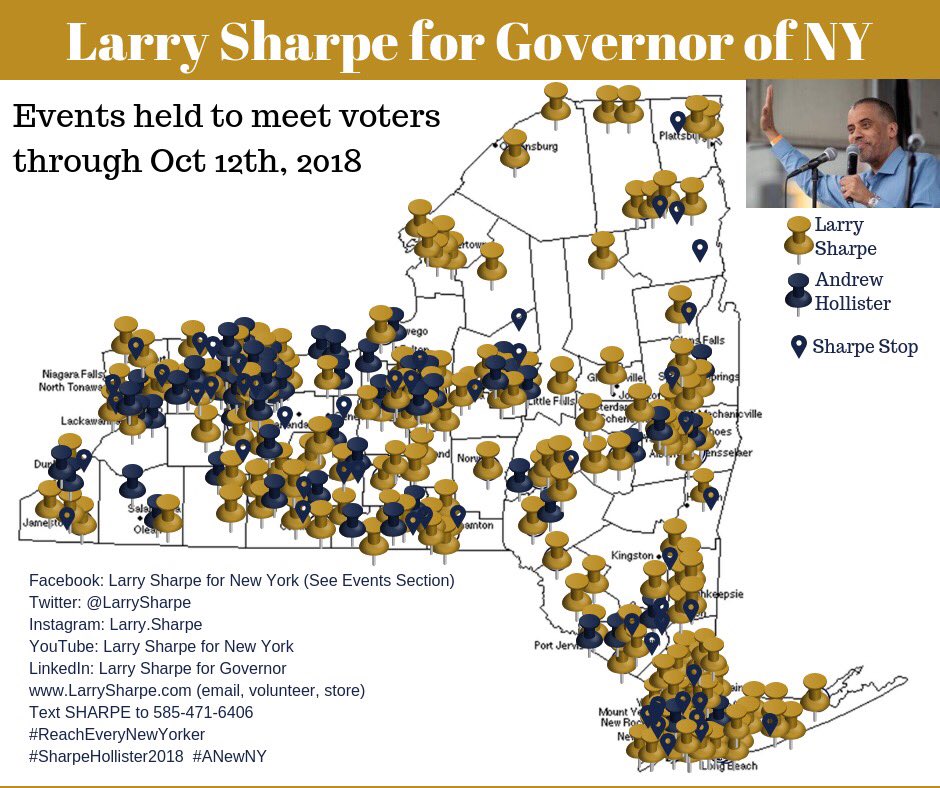'Nonpartisan' Pollsters Are Basically Doing Push Polls for Democrats and Republicans
There is no excuse to exclude high-performing Libertarians (or Greens) from "neck-and-neck" races

Vox Populi Polling, a nonpartisan polling agency (FiveThirtyEight rates it a "B"), which was "formed by some of the nation's most prominent public opinion research experts to solve a common problem: the need for fast, affordable and accurate surveys," is very proud of its work today:
New NV Poll: @DeanHeller and @RosenforNevada in neck-and-neck race for #NVSen seat, each with 44% support. https://t.co/uznfB0a1Kh
— Vox Populi Polling (@PopPolling) October 18, 2018
More neck-and-neck stuff from the Indiana Senate race, too. Plus, some advice!
New WV Poll: @MorriseyWV trails @JoeManchinWV by 5 points in #WVSen race. Has the opportunity to close the gap by capitalizing on @realDonaldTrump's high approval rating among West Virginia Republicans and Independents. https://t.co/mVwh9SChXT
— Vox Populi Polling (@PopPolling) October 18, 2018
Here's the problem with the accuracy of these purportedly non-partisan surveys: They deliberately exclude high-performing, right-there-on-the-ballot Libertarians, two of whom are far outpolling the percentage-point spread between the major party candidates (while the third, West Virginia's Rusty Hollen, has only been polled once). As reader James M. Ray rightly observed on Twitter, these efforts effectively amount to "push polls." How does removing options that actually exist, particularly in contests that are truly up for grabs, differ meaningfully from the Wikipedia definition of push-polling as "an interactive marketing technique, most commonly employed during political campaigning, in which an individual or organization attempts to manipulate or alter prospective voters' views/beliefs under the guise of conducting an opinion poll"?
Take that first Senate campaign mentioned, Nevada. Yes, the headline race is neck-and-neck—all 10 political forecasters collated here rate it as a "toss-up." All the better reason to factor in that the Libertarian on the ballot, Tim Hagan, is unusually strong, averaging 4 percent of the vote when included in polls, including his most recent result of 8 percent. Hagan, an engineer and longtime Libertarian Party (L.P.) activist, has run for elected office nine times, including three previous campaigns in swing contests, and never once received less than 3 percent of the vote. Polls without Hagan skew accuracy, while propagating the false notion among voters that only Democrats and Republicans are on offer.
It's even worse in Indiana's neck-and-neck Senate race, where Libertarian candidate Lucy Brenton (who I've written about a lot this cycle) is averaging an even better 6 percent of the vote in the four independent polls that have listed her, including this Gravis Marketing survey from last night were Brenton's 7 percent showing was only part of the interest.
You see, unusually even for polls that include Libertarians, Gravis detailed the partisan and age breakdowns for each candidate's support. It is of direct relevance to pollsters allegedly concerned with accuracy, is it not, to see which party Libertarians are pulling more from?
In this case, it's close: 4.8 percent of Republican respondents said they were voting Brenton, compared to 3.8 percent of Democrats. Her far bigger showing was with independents and third-party members, who backed Brenton 14.7 percent. (Another fun tidbit is that 12.1 percent of 18-to-29-year-olds were backing the Libertarian, within shouting distance of Republican Mike Braun's 21.8 percent; while among voters over 65 she got precisely zilch.)

I don't mean to pick on Vox Populi Polling. Indefensible candidate-exclusion, of the type that undeservedly reinforces major-party incumbency and misleads poll recipients, happens every damned day in the weeks before an election. Why, just this morning Quinnipiac University released the first independent survey of the New York gubernatorial race since the Working Families Party removed from its ballot line the well-known progressive insurgent Cynthia Nixon, choosing instead to back Nixon's Democratic primary opponent, Gov. Andrew Cuomo. (New York politics are weird.)
As recently as late September, Nixon had been polling at 10 percent as a WFP candidate, so surely Quinnipiac would be interested to see whether Nixon's anti-Cuomo base was grudgingly following the party line, or transferring to Green Party candidate Howie Hawkins (who received 4.8 percent of the vote in 2014), or shifting to the energetic and media-savvy Libertarian Larry Sharpe, or even to independent update pol Stephanie Miner? Nope, respondents were presented with the woefully inaccurate premise that the choice in this overwhelmingly blue state is between the unlovable Cuomo and a largely invisible Republican named Marc Molinaro.
That isn't science. That's propaganda.
Sharpe paid for his own poll last week, showing the headline race at 48 percent to 25 percent, followed by him with 13 percent, Miner with 8 and Hawkins with 6. (In sharp contrast, the Siena College poll with Nixon at 10 percent had Sharpe with just 2 percent, Miner with 1 percent, and Hawkins with zero.)
But the point is, independent polling agencies and their media partners who tell you that they're providing accurate nonpartisan analysis of the New York gubernatorial race—and scores of other electoral contests from coast to coast—are flat-out lying. Journalists and political scientiests should be independent checks on power, not handmaidens to it.


Show Comments (35)